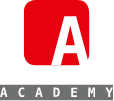Abstract
Purpose: To examine the efficacy and safety of non-ablative vaginal erbium:YAG laser (VEL) for the treatment of overactive bladder syndrome (OAB) compared with those of two other common pharmacotherapies, namely, anticholinergics and β3-adrenoceptor agonists.
Methods: Female subjects aged 60-69 years who presented with symptoms of OAB from 2015 to 2017 were assigned to three groups (n = 50) receiving treatment with an anticholinergic agent (4 mg fesoterodine), a β3-adrenoceptor agonist (25 mg mirabegron), or VEL (20 min/session of VEL performed thrice). The OAB symptom score (OABSS), Vaginal Health Index Scale (VHIS), and occurrence of adverse effects were examined prior to and at 1 year following treatment initiation.
Results: The three groups showed significant improvement (p < 0.001) for all items of the OABSS questionnaire. Improved VHIS scores were observed only in the VEL group. Furthermore, after VEL treatment, a negative correlation was observed between questions 3 (urinary urgency) and 4 (urgency urinary incontinence) of the OABSS and VHIS. Regarding safety, no adverse events were observed in the VEL group. However, subjects in the other two groups complained of constipation, as indicated by the Constipation Assessment Scale scores, and mouth dryness. The therapeutic effects were inadequate for one and two subjects in the VEL and β3-adrenoceptor agonist groups, respectively.
Conclusions: VEL safely and effectively improved OABSS through a different mechanism than that involved in pharmacotherapy. We propose the use of VEL as a novel surgical treatment option in the field of urology.
Keywords: Anticholinergic agent; Non-ablative vaginal erbium:YAG laser; Overactive bladder syndrome; Overactive bladder syndrome symptom score; Vaginal Health Index Scale; β3-Adrenoceptor agonist.


